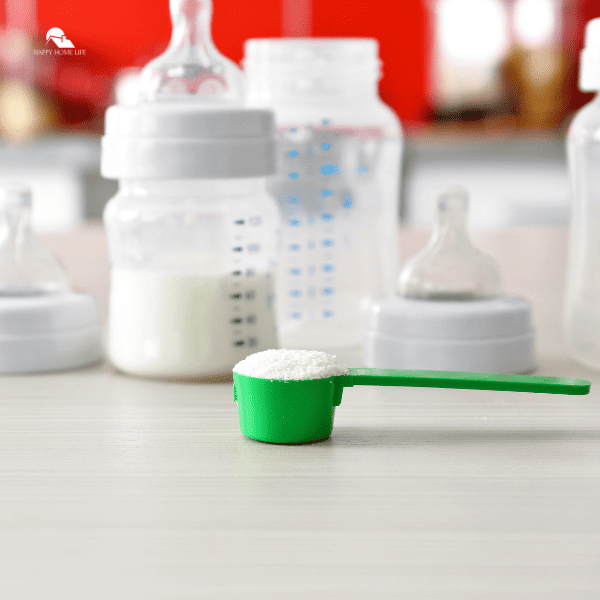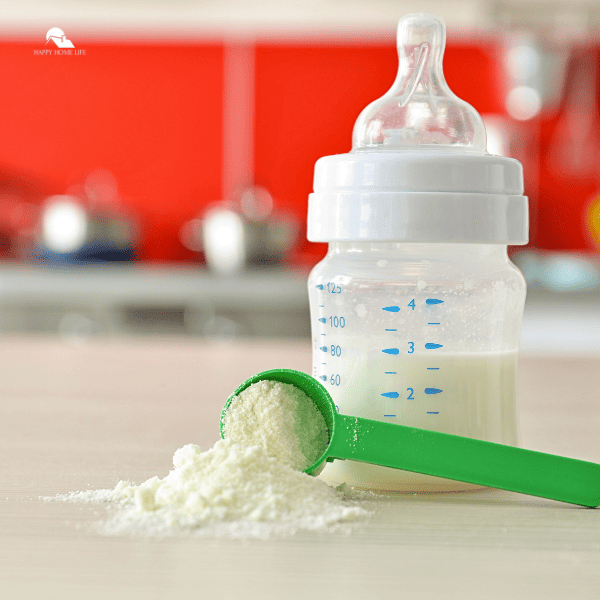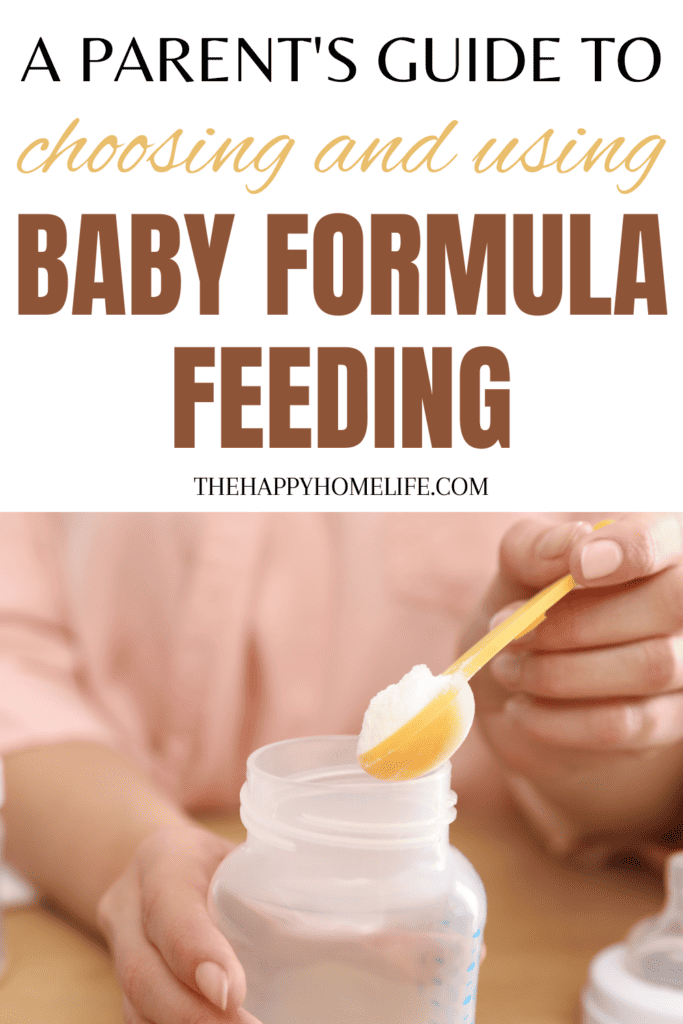The journey into parenthood brings forth a myriad of decisions, and one crucial aspect is choosing the right baby formula for your little one. As parents navigate the options available, it’s essential to understand the nuances of formula feeding to ensure their infants’ optimal nutrition and well-being.
This comprehensive guide explores the factors influencing formula choice, the different types of formulas available, and essential considerations for safe and effective formula feeding.

Understanding Baby Formula Types
Navigating the diverse landscape of baby formula types is a crucial aspect of infant feeding decisions. Parents are presented with various options, including cow’s milk-based, soy-based, hydrolyzed, and specialized formulas, each tailored to specific needs. Understanding the factors that influence the choice of formula type, such as dietary restrictions and potential allergies, empowers parents to make informed decisions for their infants.
This section aims to provide clarity on the distinctions between formula types, addressing common concerns and misconceptions, and establishing a foundation for parents to choose formulas that align with their baby’s nutritional requirements. By decoding the nuances of each formula type, parents can confidently embark on the journey of ensuring their baby receives optimal nutrition for healthy growth and development.
Reading and Decoding Formula Labels
Decoding and understanding formula labels is a vital skill for parents seeking the best nutrition for their infants. Formula labels provide crucial information about nutritional components such as proteins, carbohydrates, fats, vitamins, and minerals. This section guides parents in identifying additives and potential allergens, ensuring they make well-informed choices that align with their baby’s dietary needs.
By emphasizing compliance with regulatory standards, parents can navigate the marketplace confidently, armed with the knowledge to select formulas that prioritize their infant’s nutritional well-being. Deciphering formula labels becomes an empowering step in the formula-feeding journey, allowing parents to make informed and thoughtful choices for their baby’s health.
Choosing Formula for Specific Dietary Needs
Selecting the right formula for specific dietary needs is a crucial aspect of infant nutrition, and it’s essential to consider options that align with individual requirements. Lactose-free and hypoallergenic formulas and specialized options for unique medical conditions cater to infants with specific dietary considerations.
Seeking guidance from healthcare professionals is paramount, ensuring that parents make informed choices that prioritize their baby’s well-being. Additionally, consulting with MommyFormula.com and other manufacturers of healthy and organic formulas serves as a valuable resource, offering insights, reviews, and expert advice to aid parents in navigating the diverse landscape of baby formulas. This empowers them to make choices that contribute to their infant’s optimal health and development.

Preparing and Safely Handling Formula
Properly preparing and safely handling formula is paramount to the health and well-being of infants. This section provides essential guidelines on the correct preparation of formula, storage recommendations, and safe handling practices to prevent contamination. Parents can ensure a hygienic and seamless feeding routine by addressing common issues like formula clumping or separation.
The emphasis on safety and hygiene contributes to a positive feeding experience and reinforces parents’ confidence in providing their infants with nutritionally sound formula. This section serves as a practical guide, offering parents the knowledge and tools necessary to navigate the day-to-day aspects of formula feeding with utmost care and responsibility.
Transitioning from Breast Milk to Formula
Transitioning from breast milk to formula is a significant phase in a baby’s development, and this section provides valuable insights into the process. Understanding the reasons for transitioning, gradual introduction strategies, and tips for maintaining a positive feeding experience are essential for both parents and infants. Parents can confidently navigate potential challenges by offering guidance on the nuances of this transition period. Whether driven by personal choices or external factors, this section empowers parents to make informed decisions and ensures a smooth adjustment for their infants, fostering a positive feeding relationship during this transitional phase.
Addressing Common Concerns and Issues
Addressing common concerns and issues in formula feeding is crucial for parents navigating the intricacies of infant nutrition. This section provides insights into potential challenges, such as formula intolerance or allergies, offering guidance on recognizing and managing these issues effectively. By emphasizing the importance of consulting with pediatricians and lactation consultants, parents are encouraged to seek professional advice, ensuring the best possible care for their infants.
Common concerns like changes in appetite or feeding challenges are explored, offering practical solutions and expert insights. The aim is to provide a comprehensive resource that identifies potential issues and equips parents with the knowledge to address them proactively. By understanding and troubleshooting common concerns, parents can navigate the formula-feeding journey with confidence, creating a nurturing environment for their baby’s growth and development.

Feeding Schedule and Quantity
Establishing a consistent feeding schedule and determining appropriate feeding quantities are pivotal aspects of formula feeding. This section provides guidance on creating a schedule that aligns with an infant’s needs, emphasizing the importance of recognizing signs of hunger and fullness. By offering insights into the nuances of a balanced feeding routine, parents can foster healthy feeding habits that contribute to their baby’s overall well-being.
Additionally, understanding the appropriate feeding quantities is essential for meeting the nutritional requirements of infants at different stages of development. This section aims to empower parents with knowledge about portion sizes, ensuring that their babies receive the right amount of formula to support optimal growth. By providing practical guidance on feeding schedules and quantities, parents can navigate the formula feeding journey with a sense of structure and confidence, fostering a positive and nourishing environment for their infants.
Mixing Breastfeeding and Formula Feeding
Navigating a combination of breastfeeding and formula feeding can be a harmonious approach for many families. This section offers strategies for smoothly integrating both feeding methods, ensuring a balanced nutritional intake for infants. Tips for combining breast and bottle feeding, as well as transitioning between the two, are provided to support parents in creating a flexible and sustainable feeding routine. By acknowledging the unique needs of each family, this guide encourages a personalized approach to feeding that aligns with the preferences and circumstances of both parents and infants, ultimately fostering a positive feeding experience.

Introducing Solids Alongside Formula Feeding
As infants grow, the introduction of solid foods becomes a natural progression, and this section guides parents through the process of introducing solids alongside formula feeding. This guide supports parents in navigating this significant milestone by offering insights into the timely introduction of solid foods, coordinating solid feedings with formula, and monitoring and adapting to the baby’s evolving dietary needs. By providing practical advice on transitioning to complementary foods, parents can ensure the seamless integration of solids into their baby’s diet, promoting a balanced and nutritious approach to infant feeding.
In conclusion, choosing and using baby formula is a significant aspect of parenting that requires thoughtful consideration and informed decision-making. This guide serves as a comprehensive resource for parents, empowering them with the knowledge needed for confident formula feeding. From understanding formula types to decoding labels, addressing common concerns, and navigating transitions, this guide aims to provide a roadmap for parents embarking on the journey of formula feeding. Encouraging consultation with healthcare professionals ensures personalized guidance, allowing parents to nurture their baby’s health and development with care and confidence.






